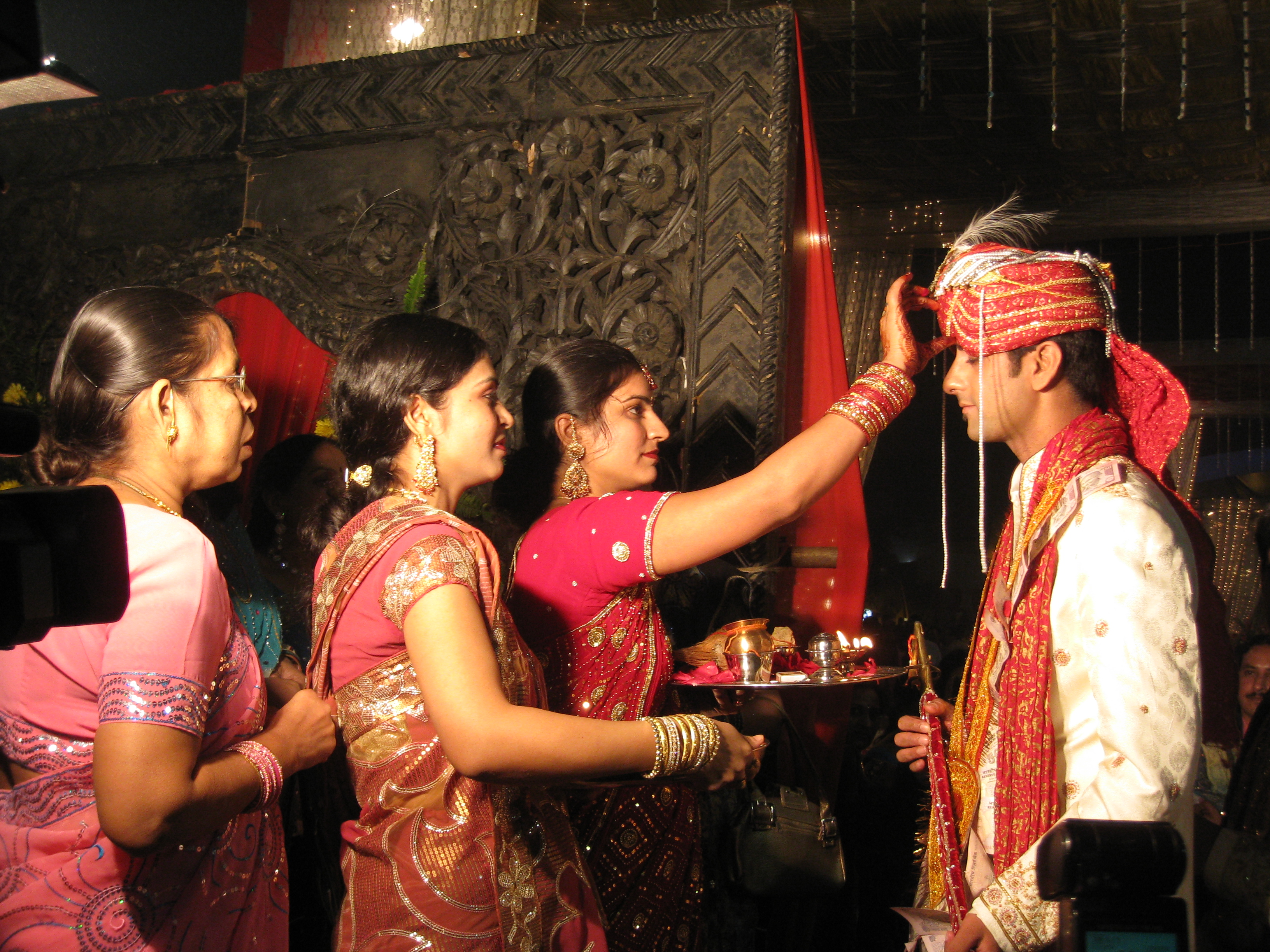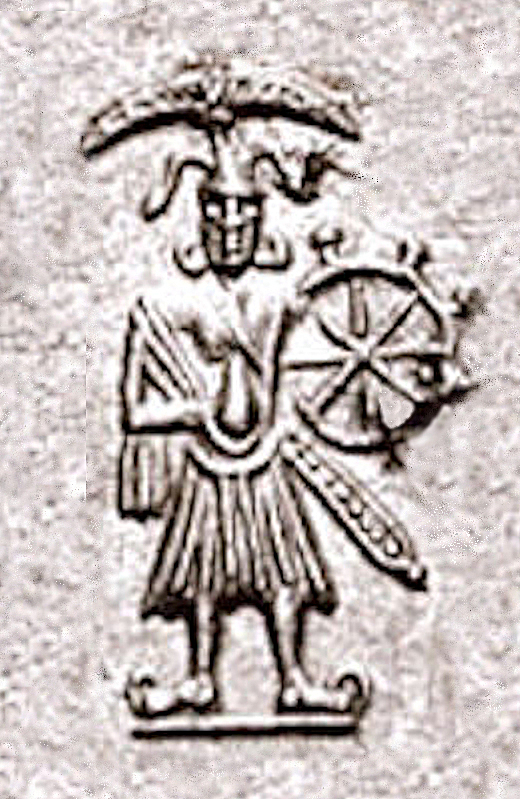|
Shanmata
''Shanmata'' () meaning "Six Sects" in Sanskrit, is a system of worship, believed in the Smarta tradition to have been founded by the Hindu philosopher Adi Shankara, whose lifetime was during circa 8th century CE. It centers around the worship of six primary deities of Hinduism: Shiva, Vishnu, Shakti, Ganesha, Surya, and Skanda. It is based on the belief in the essential oneness of all deities, the unity of Godhead, and their conceptualization of the myriad deities of India as various manifestations of the one divine power, '' Para Brahman''. Philosophy Adi Shankara's followers believe Brahman alone is ultimately real and the true self, '' atman'', is not different from ''Brahman''. It centers around the worship of the deities belonging to six '' āgama'' schools: * Shaiva * Shakta * Saurya * Vaishnava * Kaumara * Ganapatya Philosophically, all are seen by Advaitins as equal reflections of the one '' Saguna Brahman'', i.e. a personal divine with form, rather than as ... [...More Info...] [...Related Items...] OR: [Wikipedia] [Google] [Baidu] |
Adi Shankara
Adi Shankara (8th c. CE), also called Adi Shankaracharya (, ), was an Indian Vedanga, Vedic scholar, Hindu philosophy, philosopher and teacher (''acharya'') of Advaita Vedanta. Reliable information on Shankara's actual life is scant, and his true impact lies in his "iconic representation of Hinduism, Hindu religion and Hindu culture, culture," despite the fact that most Hindus do not adhere to Advaita Vedanta. Tradition also portrays him as the one who reconciled the various Hindu denominations, sects (Vaishnavism, Shaivism, and Shaktism) with the introduction of the form of Puja (Hinduism), worship, the simultaneous worship of five deities – Ganesha, Surya, Vishnu, Shiva and Devi, arguing that all deities were but different forms of the one Brahman, the invisible Supreme Being.Klaus Klostermaier (2007), A Survey of Hinduism, Third Edition, State University of New York Press, , p. 40 While he is often revered as the most important Indian philosophy, Indian philosoph ... [...More Info...] [...Related Items...] OR: [Wikipedia] [Google] [Baidu] |
Panchayatana Puja
''Panchayatana puja'' (IAST ') also known as Pancha Devi Deva Puja is a system of ''puja'' (worship) in the Smarta sampradaya, which is one of four major ''sampradaya'' of Hinduism. It consists of the worship of five deities set in a quincunx pattern, the five deities being Ganesha, Adi Shakti, Shiva, Vishnu and Surya. Sometimes an Ishta Devata (any personal god of devotee's preference) or Kartikeya is the sixth deity in the mandala (see Shanmata). Panchayatana puja has been attributed to Adi Shankara, the 8th century CE Hindu philosopher. It is a practice that became popular in medieval India. However, archaeological evidence suggests that this practice long predates the birth of Adi Shankara. Many Panchayatana mandalas and temples have been uncovered that are from the Gupta Empire period, and one Panchayatana set from the village of Nand (about 24 kilometers from Ajmer) has been dated to belong to the Kushan Empire era (pre-300 CE). The Kushan perio ... [...More Info...] [...Related Items...] OR: [Wikipedia] [Google] [Baidu] |
Smarta Tradition
The ''Smarta'' tradition (, ) is a movement in Hinduism that developed and expanded with the Puranas genre of literature. It reflects a synthesis of four philosophical strands, namely Uttara Mīmāṃsā, Advaita, Yoga, and theism. The Smarta tradition rejects theistic sectarianism, and is notable for the domestic worship of five shrines with five deities, all treated as equal – Ganesha, Shiva, Shakti, Vishnu and Surya. The Smarta tradition contrasted with the older Shrauta tradition, which was based on elaborate rituals and rites. There has been a considerable overlap in the ideas and practices of the Smarta tradition with other significant historic movements within Hinduism, namely Shaivism, Brahmanism, Vaishnavism, and Shaktism.Sanderson, Alexis. "The Saiva Age: The Rise And Dominance Of Saivism During The Early Medieval Period". In ''Genesis And Development of Tantrism'', Edited By Shingo Einoo. Tokyo: Institute Of Oriental Culture, University Of Tokyo, 2009. Institute ... [...More Info...] [...Related Items...] OR: [Wikipedia] [Google] [Baidu] |
Smartism
The ''Smarta'' tradition (, ) is a movement in Hinduism that developed and expanded with the Puranas genre of literature. It reflects a synthesis of four philosophical strands, namely Uttara Mīmāṃsā, Advaita, Yoga, and theism. The Smarta tradition rejects theistic sectarianism, and is notable for the domestic worship of five shrines with five deities, all treated as equal – Ganesha, Shiva, Shakti, Vishnu and Surya. The Smarta tradition contrasted with the older Shrauta tradition, which was based on elaborate rituals and rites. There has been a considerable overlap in the ideas and practices of the Smarta tradition with other significant historic movements within Hinduism, namely Shaivism, Brahmanism, Vaishnavism, and Shaktism.Sanderson, Alexis. "The Saiva Age: The Rise And Dominance Of Saivism During The Early Medieval Period". In ''Genesis And Development of Tantrism'', Edited By Shingo Einoo. Tokyo: Institute Of Oriental Culture, University Of Tokyo, 2009. Inst ... [...More Info...] [...Related Items...] OR: [Wikipedia] [Google] [Baidu] |
Ishta-Deva
''Ishtadeva'' or ''ishtadevata'' (Sanskrit: इष्ट देव(ता), , literally "cherished divinity" from ''iṣṭa'', "personal, liked, cherished, preferred" and '' devatā'', "godhead, divinity, tutelary deity" or ''deva'', "deity"), is a term used in Hinduism denoting a worshipper's favourite deity. It is especially significant to both the Smarta and Bhakti schools, wherein practitioners choose to worship the form of God that inspires them. Within Smartism, one of five chief deities is selected. Even in denominations that focus on a singular concept of God, such as Vaishnavism, the ishta-deva concept exists. For example, in Vaishnavism, special focus is given to a particular form of Vishnu or one of his avataras (i.e. Krishna or Rama). Similarly within Shaktism, focus is given to a particular form of the Goddess such as Parvati or Lakshmi. The Swaminarayan sect of Vaishnavism has a similar concept, but notably holds that Vishnu and Shiva are different aspects of t ... [...More Info...] [...Related Items...] OR: [Wikipedia] [Google] [Baidu] |
Hindu
Hindus (; ; also known as Sanātanīs) are people who religiously adhere to Hinduism, also known by its endonym Sanātana Dharma. Jeffery D. Long (2007), A Vision for Hinduism, IB Tauris, , pp. 35–37 Historically, the term has also been used as a geographical, cultural, and later religious identifier for people living in the Indian subcontinent. It is assumed that the term ''"Hindu"'' traces back to Avestan scripture Vendidad which refers to land of seven rivers as Hapta Hendu which itself is a cognate to Sanskrit term ''Sapta Sindhuḥ''. (The term ''Sapta Sindhuḥ'' is mentioned in Rig Veda and refers to a North western Indian region of seven rivers and to India as a whole.) The Greek cognates of the same terms are "''Indus''" (for the river) and "''India''" (for the land of the river). Likewise the Hebrew cognate ''hōd-dū'' refers to India mentioned in Hebrew BibleEsther 1:1. The term "''Hindu''" also implied a geographic, ethnic or cultural identifier for ... [...More Info...] [...Related Items...] OR: [Wikipedia] [Google] [Baidu] |
Saguna Brahman
''Saguna brahman'' ( 'The Absolute with qualities'; from Sanskrit ' 'with qualities', ''guṇa'' 'quality', and ''Brahman'' 'the Absolute') is a concept of ultimate reality in Hinduism, close to the concept of immanence, the manifested divine presence. Yoga Rājarshi (2001: p. 45) conveys his estimation of the historical synthesis of the School of Yoga (one of the six Āstika schools of Hinduism) which he holds introduces the principle of "Isvara" as Saguna Brahman, to reconcile the extreme views of Vedanta's "advandva" and Sankya's "dvandva": "Introducing the special tattva (principle) called Ishvara by yoga philosophy is a bold attempt to bring reconciliation between the transcendental, nondual monism of vedanta and the pluralistic, dualistic, atheism of sankhya. The composite system of yoga philosophy brings the two doctrines of vedanta and sankya closer to each other and makes them understood as the presentation of the same reality from two different points of view. ... [...More Info...] [...Related Items...] OR: [Wikipedia] [Google] [Baidu] |
Ganapatya
Ganapatya is a denomination of Hinduism that worships Ganesha (also called Ganapati) as the Parabrahman, Saguna Brahman.Ganapatyas Article from PHILTAR, Division of Religion and Philosophy, St Martin's College Beliefs The worship of is considered complementary with the worship of other deities. Hindus of all sects begin prayers, important undertakings, and religious ceremonies with an invocation of Ganesha, because of Ganesha's role as the god of beginnings. But although most Hindu sects do revere Ganesha, the Ganapatya sect goes further than that, and declares Ganesha to be the supreme being. Ganapatya is one of the five principal Hindu sects which focus on a particular deity, along ...[...More Info...] [...Related Items...] OR: [Wikipedia] [Google] [Baidu] |
Kaumaram
__NOTOC__ Kaumaram (, ) is a Hindu denomination that primarily venerates the Hindu deity of war, Kartikeya, also known as Kumaran, Murugan (in South India), Arumugan'','' and Subrahmanyan. Devotees of Kumaran, called Kaumaras, also revere members of his family: Parvati, Shiva, and Ganesha, as well his consorts, Devasena and Sundaravalli, the daughters of Vishnu in Tamil tradition. The important theological texts relating to Kumara are a part of the Shaiva agama canon. This sub-tradition is found among the Tamils, Kannadigas, and the Vedda, in South India, Sri Lanka, and among the Tamil diaspora worldwide. The love story of Kumara/Murugan and his wife Valli, a girl from a local tribe, is popular in Tamil Nadu, where Kumara acquired the status of a national god. Legend In the ''Ramayana'', Kartikeya is regarded to be the first son of Shiva who was incubated by the Kṛttikās, the six maidens representing the Pleiades, and the ''Puranas'' state that six children thus fused int ... [...More Info...] [...Related Items...] OR: [Wikipedia] [Google] [Baidu] |
Vaishnavism
Vaishnavism () ), also called Vishnuism, is one of the major Hindu denominations, Hindu traditions, that considers Vishnu as the sole Para Brahman, supreme being leading all other Hindu deities, that is, ''Mahavishnu''. It is one of the major Hindu denominations along with Shaivism, Shaktism, and Smartism. Its followers are called Vaishnavites or ''Vaishnava''s (), and it includes sub-sects like Krishnaism and Ramanandi Sampradaya, Ramaism, which consider Krishna and Rama as the supreme beings respectively. According to a 2020 estimate by The World Religion Database (WRD), hosted at Boston University’s Institute on Culture, Religion and World Affairs (CURA), Vaishnavism is the largest Hindu sect, constituting about 399 million Hindus. The ancient emergence of Vaishnavism is unclear, and broadly hypothesized as a History of Hinduism, fusion of various regional non-Vedic religions with worship of Vishnu. It is considered a merger of several popular non-Vedic theistic traditio ... [...More Info...] [...Related Items...] OR: [Wikipedia] [Google] [Baidu] |





